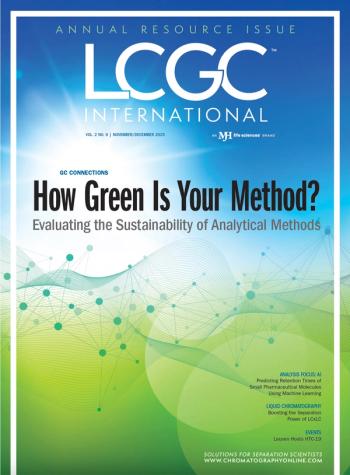
- The Column-01-09-2014
- Volume 10
- Issue 1
Black Diamond of the Food World
A study published in the Journal of Proteome Research has uncovered some of the proteins responsible for the characteristic aroma and taste of the black P?rigord truffle (Tuber melanosporum Vittad.), using a combined approach of bioinformatics and proteomic analysis.1
A study published in the Journal of Proteome Research has uncovered some of the proteins responsible for the characteristic aroma and taste of the black Périgord truffle (Tuber melanosporum Vittad.), using a combined approach of bioinformatics and proteomic analysis.1
Found growing around the trunks of hazelnut and oak trees in a symbiotic relationship, the truffles are not routinely cultivated. However, they are highly sought after ingredients and can fetch prices of up to $2000 (US dollars) per kilogram. Recent changes in climate along with other factors have resulted in a decline in harvests - further increasing the market value of the truffle.
The genome of the black Périgord truffle was first sequenced in 2010. In the current study, the researchers functionally annotated this genome sequence and performed high-accuracy liquid chromatography tandem mass spectrometry (LC–MS–MS) proteomic analysis to validate the annotation. The study identified 6487 proteins from functional annotation, confirmed 836 using proteomic analysis, and pinpointed nine proteins as contributors to the aroma. - B.D.
Reference
1. M.S. Baker et al., Journal of Proteome Research DOI: 10.1021/pr400650c (2013).
Articles in this issue
almost 12 years ago
Multi-Detection GPC/SEC for the Analysis of Polysaccharides in Foodalmost 12 years ago
Cleaning Up the Genomealmost 12 years ago
Taking Quality Time Outalmost 12 years ago
Keeping Beer Tasting Fresh — Batch-to-Batch GC Quality Analysis and Controlalmost 12 years ago
Use of Monolithic HPLC Columns for Food Analysis in Complex Matricesalmost 12 years ago
Potent Long-Lived Greenhouse Gas Discoveredalmost 12 years ago
Vol 10 No 1 The Column January 09, 2014 North American PDFalmost 12 years ago
Vol 10 No 1 The Column January 09, 2014 Europe and Asia PDFNewsletter
Join the global community of analytical scientists who trust LCGC for insights on the latest techniques, trends, and expert solutions in chromatography.



